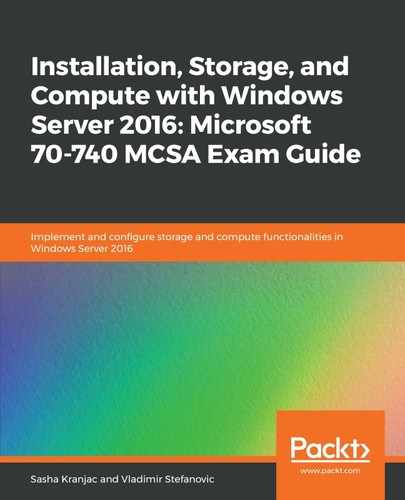Book Description
A comprehensive guide for MCSA Exam 70-740, that will help you prepare from day one to earn the valuable Microsoft Certificate
Key Features
- Leverage practice questions and mock tests to pass this certification with confidence
- Learn to Install Windows Servers,implement high availability, and monitor server environments
- Gain necessary skills to implement and configure storage and compute features
Book Description
MCSA: Windows Server 2016 certification is one of the most sought-after certifications for IT professionals, which includes working with Windows Server and performing administrative tasks around it. This book is aimed at the 70-740 certification and is part of Packt's three-book series on MCSA Windows Server 2016 certification, which covers Exam 70-740, Exam 70-741, and Exam 70-742.
This book will cover exam objectives for the 70-740 exam, and starting from installing and configuring Windows Server 2016, Windows Server imaging and deployment to configuring and managing disks and volumes, implementing and configuring server storage and implementing Hyper-V. At the end of each chapter you will be provided test questions to revise your learnings which will boost your confidence in preparing for the actual certifications.
By the end of this book, you will learn everything needed to pass the, MCSA Exam 70-740: Installation, Storage, and Compute with Windows Server 2016, certification.
What you will learn
- Install Windows Server 2016
- Upgrade and Migrate servers and workloads
- Implement and configure server storage
- Install and configure Hyper-V
- Configure the virtual machine (VM) settings
- Configure Hyper-V storage
- Configure Hyper-V networking
Who this book is for
This book is ideal for system administrators interested in installing and configuring storage and compute features with Windows Sever 2016 and aiming to pass the 70-740 certification. Some experience with Windows Server in an enterprise environment is assumed.
